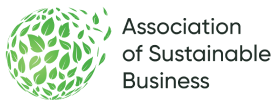Watching a team that formerly occupied 4,000 square feet of prime office space, relocate to their individual workstations brought about several changes to our day to day. The most impactful one? Communication. A tap on the shoulder was substituted by a message, and a group brainstorming session centred around a shared document as opposed to a whiteboard.
Digitally mediated communication had its moment in the spotlight during those first few weeks and it didn’t take us long to realise it wouldn’t be going anywhere anytime soon.
The seamlessness of the change can be put into question. Although Quba’s team was already acquainted with the reality of remote working on occasion, moving to an out of office day to day was a roller coaster of sorts. On the one hand, time saved from commuting is always a welcome plus. On the other, work from home coupled with the pandemic’s first lockdowns brought about a unique challenge in terms of mental health.
Amidst the changes, being able to overcome the welcome-yet-many distractions of home was not always a smooth ride, although it did have its brilliant moments. “I recall one occasion during which we were on a pitch, and we had quite a big team involved. Our Head of UX and Design was doing her presentation when her daughter came rushing in the room asking for attention! It was one of these unexpected moments of working from home – although she was apologetic in that instance, the client was amused. After winning the pitch they also commented on how they enjoyed that moment, as it added a human touch to our team!” Matt Jones, Quba’s Marketing Director, recalls.
Matt, who was working remotely for years before the pandemic commented “I was one of the lucky ones when remote working became the norm for millions of people. I had been working remotely for years prior to the pandemic and not only had adapted my environment to home working, but more importantly made the mental switch necessary for this new way of working. The biggest change I saw was a willingness by colleagues and clients to adopt technologies to facilitate communication. Zoom Teams, etc, were still something of a novelty for most pre pandemic, whereas now they are as ubiquitous as any other communication channel”.
At the intersection of a vast realisation among companies of the pivotal role that digital transformation would come to play in the years to come, and the closure of physical spaces, Quba’s profitability saw a significant increase in the past two years. The team’s productivity has been able to keep up with the pace of demand, and that is likely a testament to the potential of working from home.
Today, we function on a hybrid model. We have taken on a flexible office space, enabling our team to pop into the office whenever they feel like their office day would be better serviced through hotdesking. The hybrid model is broken down by teams, and when the need arises for an interdisciplinary meeting, as is the case with our discovery sessions, then there is the option of a physical or virtual environment to bring the team together.
At the end of the day, no working set up is entirely perfect, and we have quite enjoyed reading about the pros and cons of remote working as more and more professionals are contemplating the ideal fit for them – this HBR take is an interesting reflection on full-time work from home.
It’s like an ever-evolving puzzle; you need to move some pieces around to find the perfect fit as time passes, but with a strong, team-based culture as well as tried and tested processes, even distractions are welcome from time to time!
As for Quba’s plans for remote working in the future? It seems that the hybrid model offers the ideal mix of flexibility for the time being, and it’s here to stay for the foreseeable future.
Get more of this by subscribing to our regular newsletter





